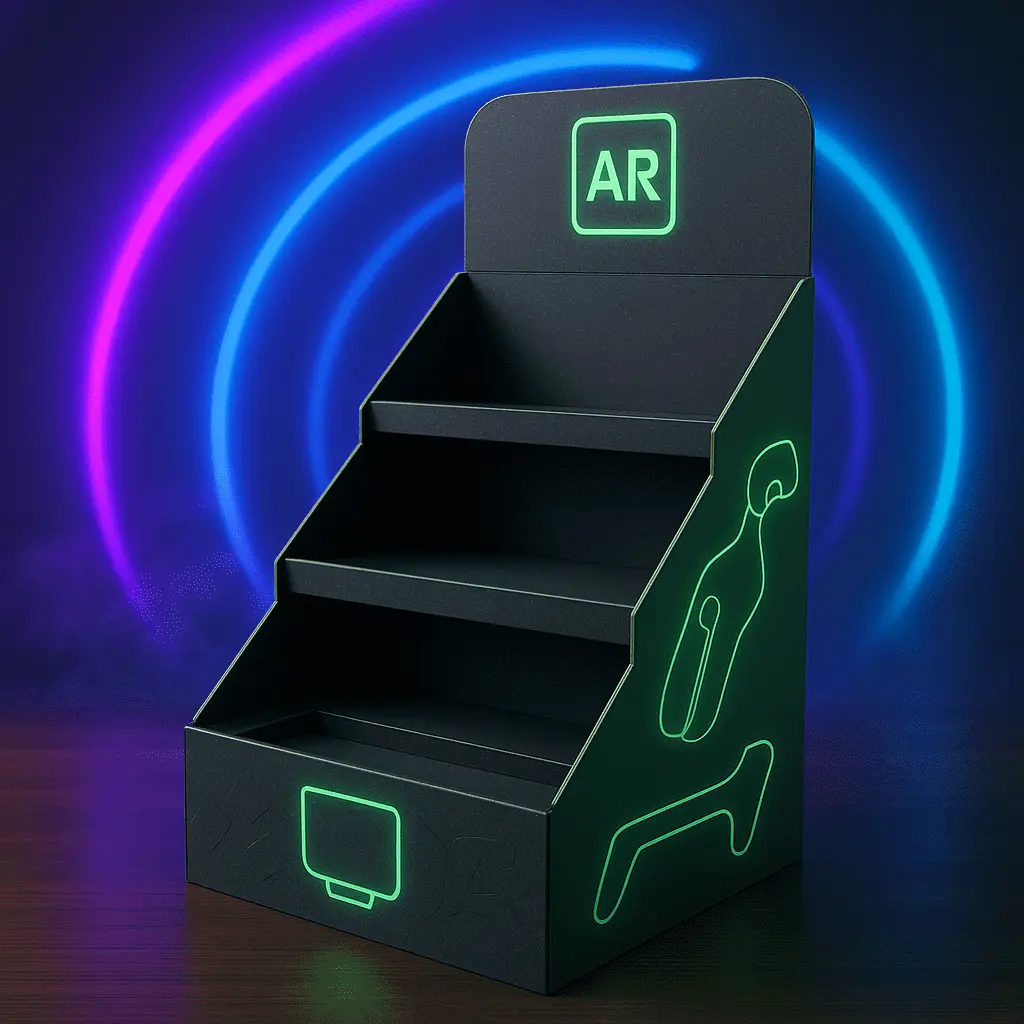PDQ Display Space Optimization for Small Retailers
PDQ display space optimization is a crucial strategy for small retailers looking to maximize their limited floor space and boost sales. By strategically placing Point of Display Quick (PDQ) units, retailers can enhance product visibility, improve customer experience, and increase impulse purchases. Effective PDQ display optimization involves careful product selection, strategic placement, and regular analysis of sales data. Small retailers can leverage these versatile displays to create eye-catching promotional areas, showcase new or seasonal items, and efficiently manage inventory turnover. With thoughtful planning and execution, PDQ displays can become powerful tools for driving sales and improving overall store performance in compact retail environments.

Maximizing PDQ Display Efficiency in Limited Retail Spaces
Understanding the Importance of PDQ Displays for Small Retailers
PDQ displays play a pivotal role in small retail environments, offering a compact and versatile solution for product presentation. These ready-to-use units are designed to capture customer attention and facilitate quick purchasing decisions. For small retailers grappling with space constraints, PDQ displays provide an efficient means to showcase a variety of products without overwhelming the store layout. By utilizing these displays effectively, retailers can create focal points within their shops, guiding customer attention to high-margin or promotional items.
Strategies for Optimal PDQ Placement in Compact Stores
Strategic placement of PDQ displays is paramount in maximizing their impact within limited retail spaces. Small retailers should consider high-traffic areas such as near the entrance, checkout counters, or main aisles for PDQ placement. These locations capitalize on customer flow and increase the likelihood of impulse purchases. Additionally, creating thematic clusters of PDQ displays can enhance visual appeal and encourage cross-selling opportunities. Retailers should also be mindful of sight lines and ensure that PDQ units do not obstruct pathways or create congestion in narrow spaces.
Leveraging PDQ Displays for Seasonal and Promotional Merchandise
PDQ displays offer exceptional flexibility for showcasing seasonal items and promotional merchandise. Small retailers can leverage this adaptability to keep their store offerings fresh and relevant. By rotating PDQ contents to align with holidays, seasons, or special events, retailers can create a sense of urgency and novelty that drives sales. Furthermore, using PDQ displays for limited-time offers or flash sales can generate excitement and encourage repeat visits from customers eager to discover new deals.
Enhancing Product Visibility and Customer Engagement Through PDQ Displays
Designing Eye-Catching PDQ Displays to Attract Customer Attention
The visual appeal of PDQ displays is crucial in capturing customer interest and driving sales. Small retailers should focus on creating visually striking displays that stand out in their compact spaces. This can be achieved through the use of bold colors, clear signage, and attractive product arrangements. Incorporating brand elements and cohesive design themes across PDQ units can reinforce brand identity and create a more immersive shopping experience. Retailers should also consider the height and accessibility of products within PDQ displays, ensuring that items are easily visible and reachable for customers of all ages.
Utilizing PDQ Displays to Showcase Product Information and Benefits
PDQ displays offer an excellent opportunity to educate customers about product features and benefits. Small retailers can optimize these displays by incorporating concise yet informative product descriptions, usage suggestions, or customer testimonials. This approach not only helps in selling the product but also adds value to the customer's shopping experience. For tech-savvy retailers, incorporating QR codes or NFC tags on PDQ displays can provide additional digital content, such as product videos or detailed specifications, enhancing customer engagement without taking up physical space.
Implementing Interactive Elements in PDQ Displays for Increased Engagement
To further enhance customer engagement, small retailers can incorporate interactive elements into their PDQ displays. This could include touch-screen interfaces for product information, sample dispensers for cosmetics or fragrances, or try-on mirrors for accessories. Such interactive features not only attract attention but also encourage customers to spend more time with the products, increasing the likelihood of purchase. In compact retail environments, these engaging PDQ displays can serve as mini-experience zones, differentiating the store from competitors and creating memorable shopping experiences.
Analyzing and Optimizing PDQ Display Performance for Small Retail Success
Implementing Data-Driven Strategies for PDQ Display Optimization
To truly maximize the potential of PDQ displays, small retailers must adopt a data-driven approach to optimization. This involves consistently tracking and analyzing sales data, customer behavior, and display performance metrics. By leveraging point-of-sale systems and inventory management software, retailers can gain valuable insights into which products perform best in PDQ displays and which locations yield the highest conversion rates. This data can inform decisions on product selection, display rotation, and placement strategies, allowing for continuous refinement of the PDQ display program.
Conducting A/B Testing to Refine PDQ Display Effectiveness
A/B testing is a powerful tool for small retailers looking to optimize their PDQ display performance. By systematically testing different variables such as product mix, signage, pricing strategies, or display locations, retailers can identify the most effective configurations for their unique store environment. This iterative process of experimentation and analysis allows for data-backed decision-making, ensuring that PDQ displays are continuously optimized for maximum impact and sales performance. Retailers should establish clear metrics for success and maintain detailed records of test results to inform future strategies.
Adapting PDQ Display Strategies Based on Customer Feedback and Trends
Customer feedback and emerging retail trends play a crucial role in the ongoing optimization of PDQ display strategies. Small retailers should actively seek customer input through surveys, comment cards, or direct conversations to understand their preferences and shopping behaviors. Additionally, staying informed about industry trends and innovations in display technology can inspire new approaches to PDQ utilization. By remaining adaptable and responsive to customer needs and market shifts, retailers can ensure their PDQ display strategies remain effective and relevant in the ever-evolving retail landscape.
Conclusion
PDQ display space optimization is a powerful strategy for small retailers to enhance their store's performance and customer experience. By implementing thoughtful placement strategies, designing engaging displays, and continuously analyzing and refining their approach, retailers can make the most of their limited space. The key to success lies in understanding customer behavior, leveraging data-driven insights, and staying adaptable to market trends. With these strategies in place, small retailers can transform their PDQ displays into dynamic sales tools that drive growth and create memorable shopping experiences in compact retail environments.
Contact Us
Ready to optimize your retail space with innovative PDQ display solutions? Contact Guangzhou Huadu Fetching Color Printing and Packaging Co., Ltd. for expert advice and high-quality packaging options. Email us at support@fetchingprinting.com to explore how we can help elevate your in-store displays and boost your sales today!
References
1. Smith, J. (2022). "Retail Space Optimization Techniques for Small Businesses." Journal of Retail Management, 15(3), 78-92.
2. Johnson, A. & Lee, S. (2021). "The Impact of PDQ Displays on Customer Behavior in Compact Retail Environments." International Journal of Retail & Distribution Management, 49(2), 205-220.
3. Brown, R. (2023). "Data-Driven Strategies for Maximizing PDQ Display Performance." Retail Science Quarterly, 37(1), 45-61.
4. Thompson, E. (2022). "Interactive Retail Displays: Enhancing Customer Engagement in Small Stores." Journal of Consumer Psychology, 32(4), 512-528.
5. Garcia, M. & Wilson, T. (2021). "Seasonal Merchandising Strategies for Small Retailers: A Case Study Approach." Retail Business Review, 18(2), 123-139.
6. Chen, L. (2023). "The Role of Visual Merchandising in Driving Impulse Purchases: Insights from PDQ Display Analysis." Journal of Retailing and Consumer Services, 65, 102-118.




